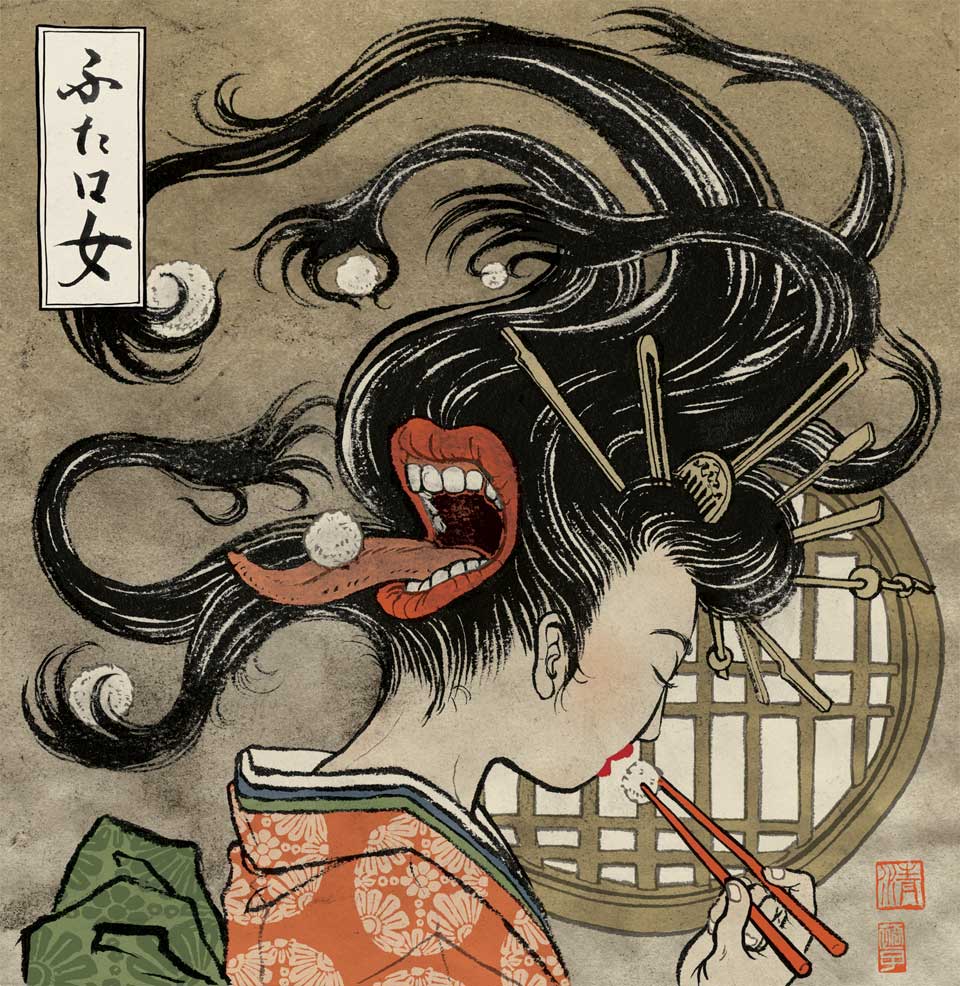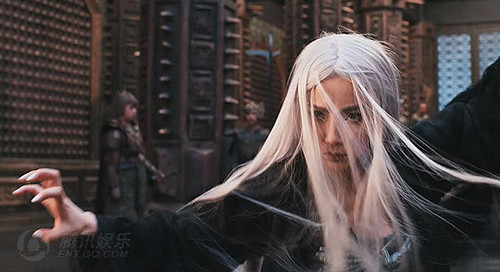
I recently heard about both Bayonetta and Shantae being video game characters who fight with their hair. I don’t know much about these games, but from some brief research I found that Bayonetta doesn’t directly use it as a weapon (she wields swords and guns instead), but is a witch who draws her power from it.

It starts to wilt when she’s using a lot of energy. She can also use it to summon demons.

What’s more, her skin-tight outfit is made of her hair, but is apparently a lot more comfortable than the hair shirts ascetics used to wear to torture themselves. Shantae is a half-genie largely modeled on the titular character from I Dream of Jeannie, complete with scanty clothing. It’s strange how stereotypical Middle Eastern women are generally either totally covered or almost entirely uncovered. Shantae is a genuine belly dancer, being able to use dances to transform into animals.

Her main weapon, however, is her hair, which she uses as a whip.

The series, which started with a flop on the Game Boy Color (released AFTER the Game Boy Advance had been out for a while) and was later revived with two cross-system games and another one in the works, seems like the kind of thing I’d like in that the setting and plot have a fairy-tale feel. I’m pretty bad at platformers, though, which isn’t to say I don’t like them.

Actually, the first time I heard of a game in which the hero uses hair as a weapon, it wasn’t a sexy woman doing so, but a dude. Back when I had a subscription to Nintendo Power, they were hyping up a game called Kabuki Quantum Fighter, which had a rather innovative story, but apparently actually plays as a fairly dull side-scroller. The plot has it that aliens have launched a computer virus to take over a supercomputer that controls the country’s nuclear arsenal. Now, I don’t know how nuclear weapons are controlled in real life, but I tend to doubt there’s one computer that can give a hacker access to all of them. A colonel volunteers to be digitized and go inside the computer to fight the bad guys. Basically, it’s the plots of 1980s movies about computers sewn together, except with the weird Japanese twist that, when Colonel Scott O’Connor goes inside the computer world, he turns into a Kabuki dancer. Apparently one of his ancestors worked in the Kabuki theater, so that affects him somehow. I’m not sure that takes precedent over what any of his other ancestors did. Could the computer have decided that, if he had a great-grandfather who was a shoemaker, he would have to fight monsters with a shoe hammer, pliers, and an awl? Well, instead, he fights with his hair, I guess just because some male kabuki actors wore long wigs.

For a significant part of history, the theater was an all-male endeavor, so that meant men playing female parts. I haven’t seen any indication that using hair as a weapon was part of kabuki theater.

The story was actually changed from the original Japanese release, in which the protagonist isn’t a military officer but a fifteen-year-old descendant of a samurai character from a movie. The page where I got that information says that there’s a scene in the movie where the samurai wears a kabuki outfit and whips his hair around, presumably the inspiration for the attack, even though the film character didn’t fight anyone with it. Based on the gameplay footage I found on YouTube, the digital world is quite industrial-looking.
What I’ve read about other stages indicates that there are also some old castles, and the setting is quite reminiscent of Ninja Gaiden.
This TV Tropes page lists these games among other media in which characters have powerful hair that they can control. The Marvel Comics character Medusa, Queen of the Inhumans, doesn’t have snakey hair like her namesake, but rather incredibly strong hair that she can manipulate like appendages.

She can use it as a weapon or a bunch of ropes, or to lift objects.

Much older than this comic book character is the Japanese demoness known as the Futakuchi-Onna, or “two-mouthed woman,” who fittingly has one mouth in the front of her head and one in the back, hidden by hair.

A common story involving this creature has a miser marry a woman he assumes eats very little, but it turns out her hidden second mouth is ravenous, possibly with a mind of its own. In order to feed this mouth, the surrounding hair functions like hands.

The Futakuchi is sometimes a shape-shifting monster that takes the form of a woman, and at other times an actual human woman cursed for not feeding a child enough. The TVT page also mentions the White-Haired Witch Lian Nichang from the Chinese martial arts novel Baifa Monü Zhuan, who as far as I know isn’t able to use her hair to fight. It just turns white when she’s spurned by her lover (not that that isn’t pretty magical in and of itself). There have been numerous films adapted from or inspired by the book, however, and I understand some of them DO show the character using her hair as a whip.

I don’t know of any indication that Rapunzel from the fairy tale is able to move her hair by itself, but it can be used as a ladder, which means it must be really strong.

Disney’s version of the character in Tangled adapts it to many other purposes as well.

In fact, it put me in mind of the character Baron Belfaygor of Bourne from Ruth Plumly Thompson’s Jack Pumpkinhead of Oz, whose Chief Mesmerizer accidentally gives him a beard that won’t stop growing. The protagonists in the book use it to help in several situations, including crossing a chasm, helping others into a tower, and retrieving a magic flagon from a fountain of fire.

Again, Belfaygor has no control over the beard, but can use its magic to his advantage.

Pingback: Such Shellfish Women | VoVatia